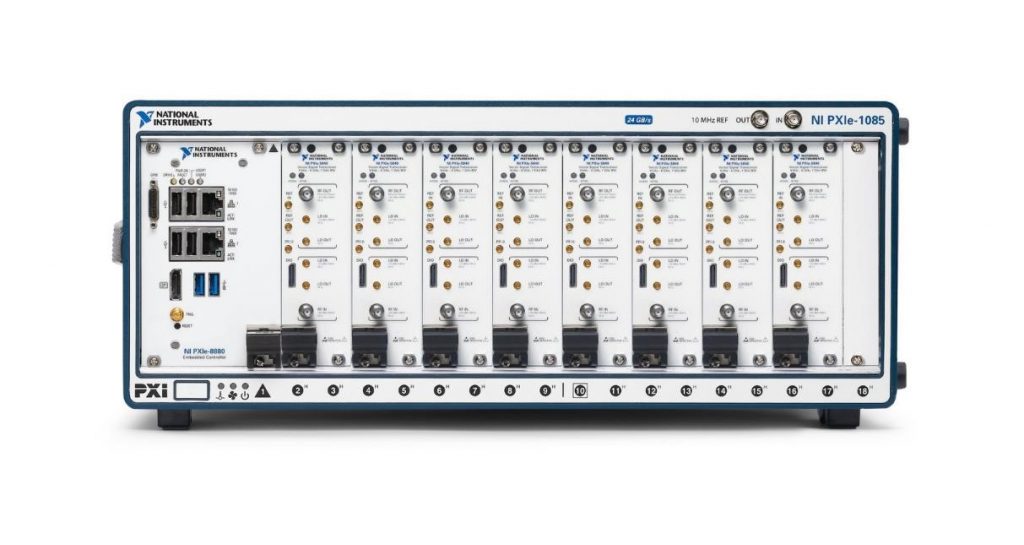Key Application Areas
Aerospace and Defense Test
The lifespan of many aerospace and defense testers can reach 40 years and beyond. The challenges of replacing an obsolete instrument and recertifying a tester can be extremely costly. The reconfigurable nature of the PXI based modular instruments allows for custom triggering, inline signal processing such as filtering, and allows the tester to stay consistent with current generation while scaling for future requirements thereby helping to reduce both certification & maintenance costs. The reconfigurable nature of the NI PXIe 517x & PXIe 5164 oscilloscopes, their high channel density & high input voltage range respectively makes them a good choice for new designs as well as drop-in replacements for obsolete instruments. NI PXIe 5840 combines 1 GHz instantaneous bandwidth with a Xilinx Virtex-7 FPGA, making it ideal for applications ranging from EW systems to radar target emulators. In a radar target emulator, engineers can program the VST to capture a stimulus signal from a radar system under test; introduce one or more targets of various sizes; add delays, Doppler shifts and other effects to the signal in real time; and immediately generate the response back to the radar receiver.
Semiconductor & Wireless Test
Testing the new semiconductor devices or Systems-on-chips (SoCs) that are making modern wireless revolution possible requires high resolution, speed, and flexible instrument performance. The channel density, high resolution, superb spectral performance, and user-programmable FPGA of the PXIe-517x oscilloscopes make them ideal tools for making many of the fast-analog measurements needed in semiconductor characterization and production test systems. The second-generation VST’s wide bandwidth is important in semiconductor test applications like PA and front-end module (FEM) testing, where the bandwidth requirements for the instrument often exceed the bandwidth of the signal.


Advanced Digital Pre-distortion (DPD) algorithms often require the pre-distorted signal to have three to five times the bandwidth of the original RF signal. The new PXIe-5840 VST can measure signals with bandwidth requirements around 500 MHz for a 100 MHz LTE-Advanced signal and 800 MHz for a 160 MHz 802.11ac/ax signal. By exploiting the power of the VST’s FPGA, this whole process can run in hardware, in real time, empowering PA engineers to apply custom DPD to every DUT, even in high volume manufacturing test environments (see Figure 4). Next generation wireless devices introduce the latest evolution of standards like LTE-Advanced Pro and 802.11ax which leverage carrier aggregation and higher-order MIMO configurations. The second-generation VST’s smaller footprint allows for up to eight VSTs to form 8×8 MIMO test systems in a single 18-slot PXI chassis (see Figure 3).



